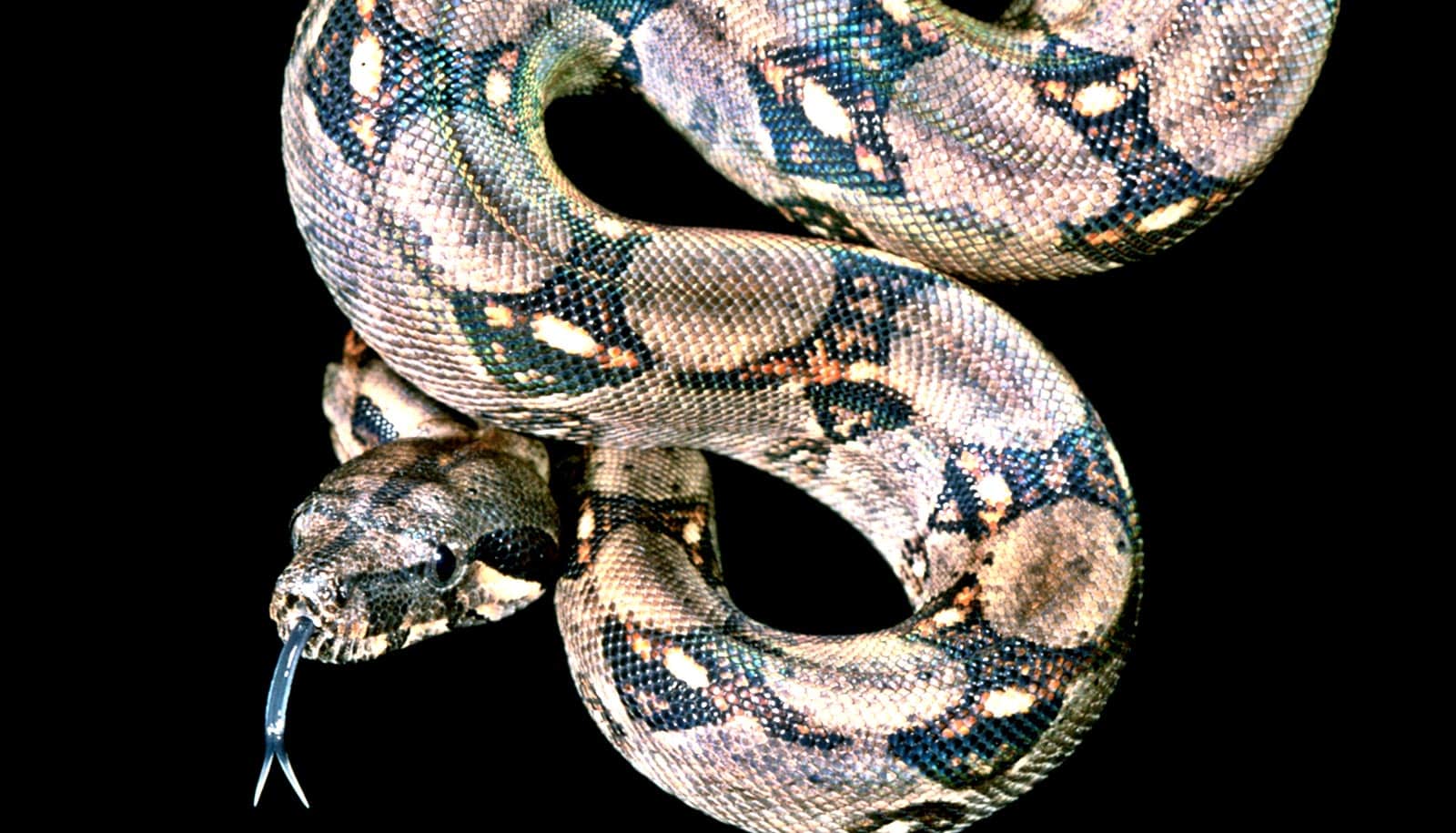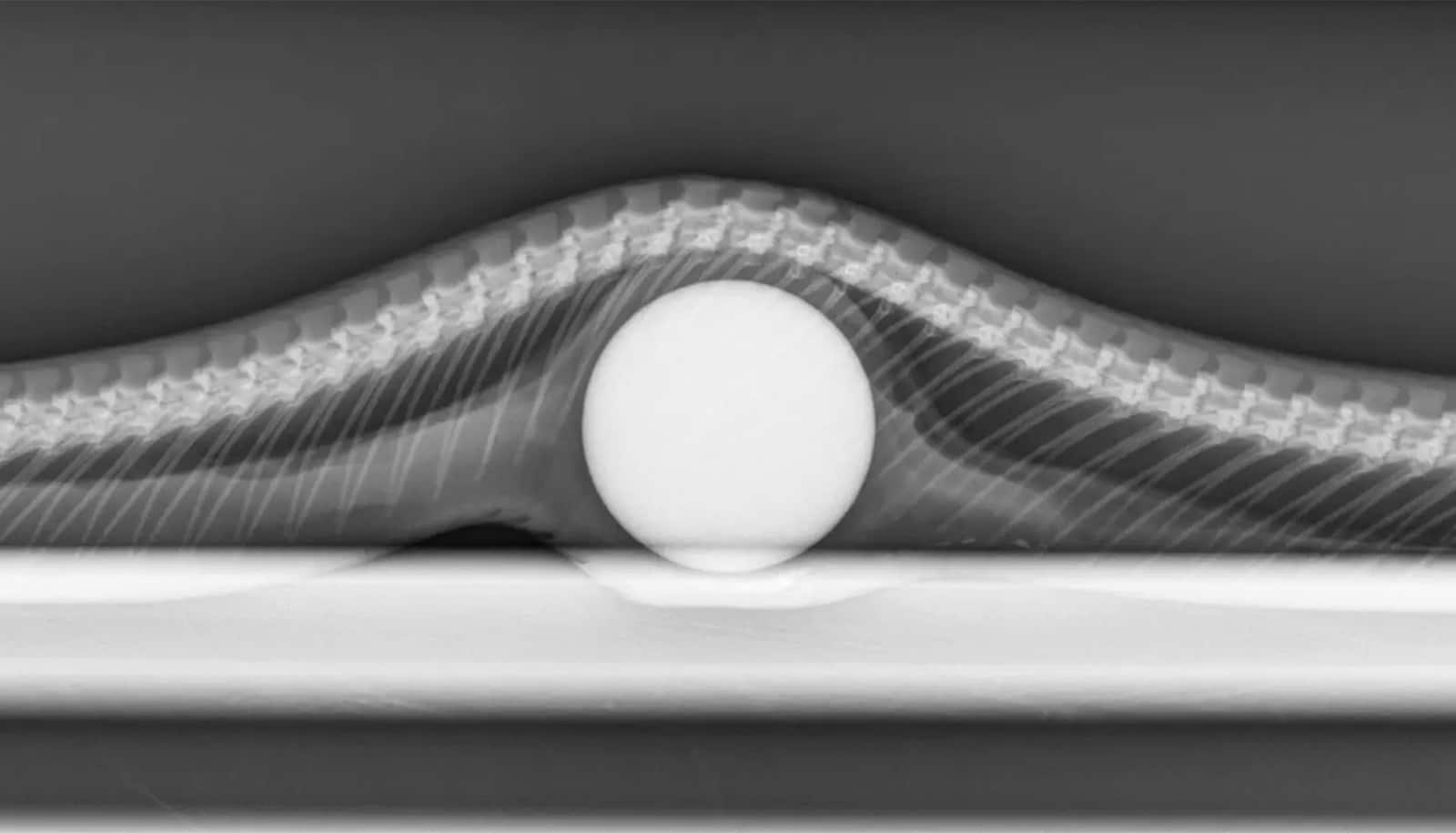New research show how boa constrictors are able to adjust which region of the ribcage they use to inhale, depending on whether they are resting, constricting, or digesting.
Eating dinner puts the snake in a bit of a bind. The mechanics of squeezing a creature to death and then swallowing it whole create pressure on the boa’s ribs and lungs, restricting their ability to fill their lungs with oxygenated air.
The new findings show that snakes have clearly overcome—some might even say mastered—the challenges of breathing while eating.
“By showing how snakes were able to circumvent the mechanical constraints of constriction and large prey ingestion—the very things that helped distinguish them from other limbless elongate animals—this study provides a new perspective on snake evolution,” says John Capano, a postdoctoral research associate in the lab of Matt Fuxjager, an associate professor in the ecology, evolution, and organismal biology department at Brown University, and lead author of the paper in the Journal of Experimental Biology.
Snakes don’t have diaphragms, so they rely entirely on the motions of their ribs to breathe, Capano says. To quantify individual rib motions, Capano and Elizabeth Brainerd, a professor of biology and medical science, used a 3D imaging technology called X-ray reconstruction of moving morphology (XROMM), which can show the rapid skeletal movement of live creatures.
XROMM combines 3D models of bone morphology with movement data from x-ray video to create highly accurate re-animations of the bones moving in space (for example: birds flying, frogs jumping, and snakes breathing).
In the experiments, Capano and Brainerd secured a blood pressure cuff around the ribs of boa constrictors to restrict their movements. Capano attached tiny metal markers to two ribs in each reptile—one set of markers a third of the way down the snake’s body and another halfway along—to visualize how the ribs moved using X-rays. Then he positioned a blood pressure cuff over the ribs in both regions and gradually increased the pressure to prevent the ribs from moving.
Some of the snakes reacted to the feeling of the cuff by hissing defensively, thus filling their lungs with air and expanding their ribs. “Hissing provided us with an opportunity to measure some of the biggest breaths snakes take,” Capano says.
Reconstructing the boa constrictors’ rib movements, it was clear that the animals were able to control the movements of ribs in different portions of the rib cage independently. When the blood pressure cuff gripped boa constrictors a third of the way along their bodies, the animals breathed using the ribs further back.
However, when the ribs toward the rear of the lung were constricted, the snakes breathed using the ribs closer to the head. In fact, the ribs at the far end of the lung only moved when the forward ribs were gripped, drawing air deep into the posterior section of lung, even though this further back region has a poor blood supply and cannot uptake oxygen into the body.
The researchers discovered that the far end of the lung (known as the saccular region) behaved like a bellows, pulling air through the front section of the lung (the vascular region) when that area wasn’t able to do its job. In this way, they were able to continue to supply the body with oxygen even when the vascular region couldn’t ventilate itself. In control experiments in which no pressure was applied to the vascular region, snakes continued to breathe using rib motions in this area.
In addition, Capano, with Scott Boback and Charles Zwemer from Dickinson College, recorded the nerve signals controlling the muscles that moved the ribs during different behaviors. Boback also filmed a snake with a GoPro camera as it dined. The researchers found that the snake could turn off the nerve signals to the muscles in both the front and back part of the lung; the snakes were able to shift where they breathed by activating a different set of ribs further along the body.
The researchers found multiple lines of evidence in support of their hypothesis that boa constrictors actively modulate the trunk segments and ribs used for lung ventilation in response to hindered rib motions. They also confirmed that during prey ingestion, boa constrictors breathed with segments that were not full of food, shifting the sections they used as the prey moved through their digestive system.
Because subduing and digesting a victim requires a lot of energy (and thus oxygen), the researchers concluded that the snakes likely adapted their sectional-breathing style before they evolved to take on larger prey.
The findings help explain how snakes have been able to adapt to a wide diversity of habitats, develop into countless species, and proliferate, Capano says.
“Snakes are, by far, one of most widespread and adaptable predators on the planet, yet the fact that they’ve managed to become so successful within the confines of an elongate, limbless body is quite remarkable—especially considering that this body type has limited the diversity and range of other similarly shaped vertebrates,” Capano says.
Evolving the ability to constrict and ingest large prey drastically expanded snakes’ meal options beyond the small insects consumed by most elongate vertebrates. However, Capano says, “we suggest that constriction and eating massive prey could not have evolved to such extreme and effective levels without modular lung ventilation.”
Additional coauthors are from the University of the Sunshine Coast in Australia and Brown. The National Science Foundation and Sigma Xi funded the work.
Source: Brown University

